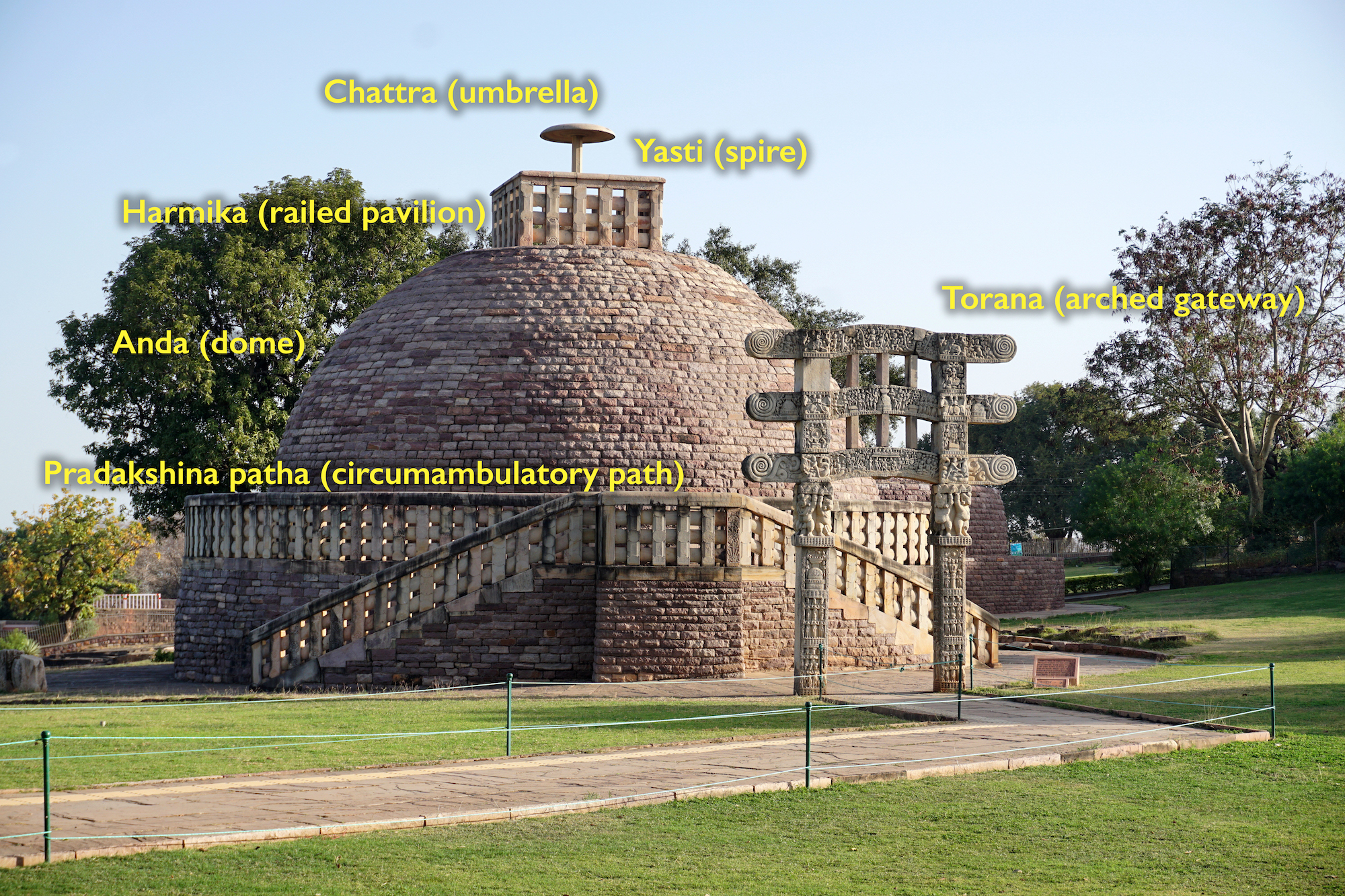
Why in the News?
External Affairs Minister S. Jaishankar visited the replica of the East Gate of Sanchi’s Great Stupa in Berlin.
About the Great Stupa of Sanchi
| Details | |
| Establishment |
|
| Purpose | Built to enshrine the relics of Buddha and symbolise the Buddhist faith. |
| Construction |
|
| Design |
|
| Toranas (Gateways) | Each torana consists of 2 pillars supporting 3 architraves, adorned with bas-reliefs depicting scenes from Buddha’s life, Jataka tales, and Buddhist symbols. |
| Artistic Features | The toranas are famous for their intricate carvings, depicting elephants, winged lions, peacocks, and shalabhanjikas (fertility symbols). |
| Symbolism | Upper architrave shows seven Manushi Buddhas (previous Buddhas), the middle depicts the Great Departure of Prince Siddhartha, and the lower shows Ashoka’s visit to the Bodhi tree. |
| Restoration | Rediscovered in 1818 by British officer Henry Taylor and restored by John Marshall (ASI director) in the early 1900s with financial aid from the Begums of Bhopal. |
| Replica of East Gate |
|
PYQ:[2013] Consider the following historical places: 1. Ajanta Caves 2. Lepakshi Temple 3. Sanchi Stupa Which of the above places is / are also known for mural paintings? (a) 1 only (b) 1 and 2 only (c) 1, 2 and 3 (d) None [2016] Early Buddhist Stupa-art, while depicting folk motifs and narratives successfully expounds Buddhist ideals. Elucidate. |

